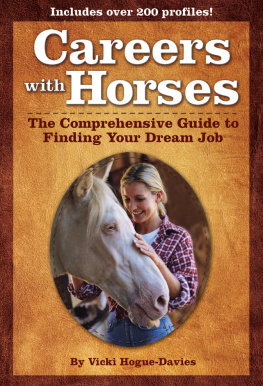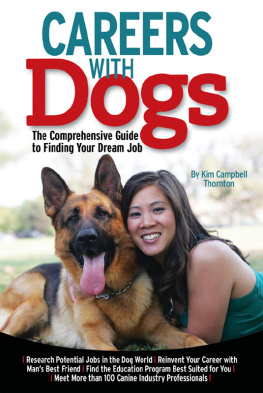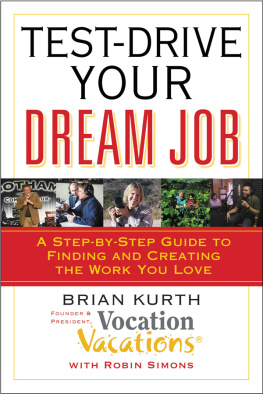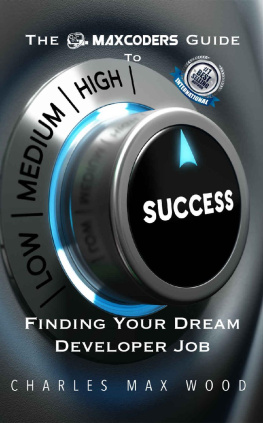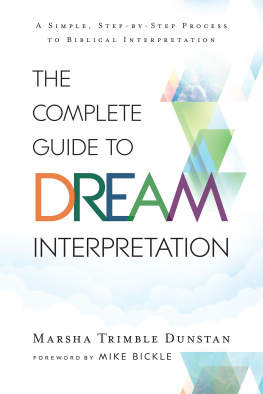Vicki Hogue-Davies - Careers with Horses: The Comprehensive Guide to Finding Your Dream Job
Here you can read online Vicki Hogue-Davies - Careers with Horses: The Comprehensive Guide to Finding Your Dream Job full text of the book (entire story) in english for free. Download pdf and epub, get meaning, cover and reviews about this ebook. year: 2012, publisher: CompanionHouse Books, genre: Home and family. Description of the work, (preface) as well as reviews are available. Best literature library LitArk.com created for fans of good reading and offers a wide selection of genres:
Romance novel
Science fiction
Adventure
Detective
Science
History
Home and family
Prose
Art
Politics
Computer
Non-fiction
Religion
Business
Children
Humor
Choose a favorite category and find really read worthwhile books. Enjoy immersion in the world of imagination, feel the emotions of the characters or learn something new for yourself, make an fascinating discovery.
- Book:Careers with Horses: The Comprehensive Guide to Finding Your Dream Job
- Author:
- Publisher:CompanionHouse Books
- Genre:
- Year:2012
- Rating:5 / 5
- Favourites:Add to favourites
- Your mark:
- 100
- 1
- 2
- 3
- 4
- 5
Careers with Horses: The Comprehensive Guide to Finding Your Dream Job: summary, description and annotation
We offer to read an annotation, description, summary or preface (depends on what the author of the book "Careers with Horses: The Comprehensive Guide to Finding Your Dream Job" wrote himself). If you haven't found the necessary information about the book — write in the comments, we will try to find it.
Careers with Horses: The Comprehensive Guide to Finding Your Dream Job — read online for free the complete book (whole text) full work
Below is the text of the book, divided by pages. System saving the place of the last page read, allows you to conveniently read the book "Careers with Horses: The Comprehensive Guide to Finding Your Dream Job" online for free, without having to search again every time where you left off. Put a bookmark, and you can go to the page where you finished reading at any time.
Font size:
Interval:
Bookmark:
Karla Austin, Business Operations Manager Ruth Strother, Editor-at-Large Michelle Martinez, Associate Editor Vicky Vaughn, Book Designer Rachael Rice, Indexer Nick Clemente, Special Consultant Jen Dorsey, Editor Rebekah Bryant, Editorial Assistant Monika Stout, Production Artist Copyright 2004 by I-5 Press Chapter opener photos Sharon Fibelkorn Illustrations Sheri Gordon All rights reserved. No part of this book may be reproduced, stored in a retrieval system, or transmitted in any form by any means, electronic, mechanical, photocopying, recording, or otherwise, without the prior written permission of I-5 Press, except for the inclusion of brief quotations in an acknowledged review. Library of Congress Cataloging-in-Publication Data Hogue-Davies, Vicki. Careers with horses : the comprehensive guide to finding your dream job / by Vicki Hogue-Davies. p. cm.
ISBN 1-931993-05-X (alk. paper) eISBN 978-1-93704-985-0 1. Horse industryVocational guidance. I. Title. SF285.25.H64 2004 636.1'0023dc22 2003028131 I-5 Press A Division of I-5 Publishing, LLC 3 Burroughs Irvine, California 92618 Printed and Bound in Singapore 10 9 8 7 6 5 4 3 2 1 TABLE OF CONTENTS CHAPTER 1The Horse Industry in America
CHAPTER 1The Horse Industry in America G od forbid that I should go to any heaven in which there are no horses, wrote Robert Bontine Cunninghame-Graham, Scottish horseman, writer, and adventurer, in a letter to former U.S.
G od forbid that I should go to any heaven in which there are no horses, wrote Robert Bontine Cunninghame-Graham, Scottish horseman, writer, and adventurer, in a letter to former U.S.
President Theodore Roosevelt in 1917. If the size and scope of the U.S. horse industry is any indicator, the passion for horses displayed in Cunninghame-Grahams words rings true with people today. Though the horse industry can be difficult to quantify because of its size and diversity, separate surveys done during the last several years by three organizations show that there are almost 7 million horses in the United States. This figure includes horses used in recreation, showing, racing, breeding, farming and ranching, rodeo, polo, and police work. The American Horse Council, the trade association representing the industry nationally, put the number of horses at more than 6.9 million, following a major study released in late 1996.
The National Agricultural Statistics Board, part of the United States Department of Agriculture (USDA), estimated there are approximately 5.3 million horses in the United States in its most recent survey in 1999. This figure is up 1.3 percent from the boards survey one year earlier. The American Veterinary Medical Association says in its statistical data on horse ownership from 1996, there are 4 million horses being utilized as companion animals (used noncommercially) in this country.  There are approximately 100 different horse breeds in the United States. While the exact number of horses in the U.S. may lie somewhere between these figuresor may be even higher when taking into account potential yearly growth of the populationthe industrys contribution to the U.S. economy cannot be argued.
There are approximately 100 different horse breeds in the United States. While the exact number of horses in the U.S. may lie somewhere between these figuresor may be even higher when taking into account potential yearly growth of the populationthe industrys contribution to the U.S. economy cannot be argued.
Using the 1996 American Horse Council figures, the horse industry supports more than 1.4 million full-time jobs across the country, directly produces goods and services of $25.3 billion, and has a total impact of $112.1 billion on the United States gross domestic product. These figures place the horse industrys contribution to the GDP just behind apparel and textile products manufacturing and ahead of rail transportation, motion picture services, and furniture and fixtures manufacturing. It is no wonder that horses contribute so much, since there are approximately 100 different horse breeds in the United States. The associations dedicated to promoting and improving horse breeds in this country, such as the American Paint Horse Association, American Quarter Horse Association, and American Saddlebred Horse Association, make up an even larger number. Top horse-owning states include Texas, California, Florida, and Oklahoma. Recreational riding, showing, and racing count the largest numbers of equine and human participants (see table).
Horses and the people who care for them are also involved in activities like law enforcement, working cattle, and helping the physically and developmentally disabled. Breeding, raising, and training the horses that take part in all of these activities is a cornerstone of the industry, and the businesses that supply goods and services, as well as the veterinarians, researchers, nutritionists, and other professionals engaged in improving equine health, are all major contributors. Number of Horses and Participants by Activity(Table courtesy of the American Horse Council) * Includes farm and ranch work, police work, rodeo, and polo** The sum of participants by activity does not equal the total number of participants because individuals may be counted in more than one activity The Industrys Future While there are no overall figures available about growth of the horse industry each year, some horse organizations, such as the American Quarter Horse Association (AQHA), report continued increases in memberships and new foal registrations. (The AQHA remains the largest single breed horse organization in the world.) However, other breed organizations report that the growth of their organizations is relatively flat, which could be attributed to the state of the countrys overall economy. After several years of decline followed by marginal gains in the number of foals in recent years, Thoroughbred breeders were hit hard in 2001 and 2002 by the onset of mare reproductive loss syndrome (MRLS), which terminated hundreds of pregnancies or caused stillborn births for a significant portion of the Kentucky mare population. The overall loss was $336 million, according to a study by the University of Louisville, and the number of foals impacted in 2002 was estimated at 20 percent.
* Includes farm and ranch work, police work, rodeo, and polo** The sum of participants by activity does not equal the total number of participants because individuals may be counted in more than one activity The Industrys Future While there are no overall figures available about growth of the horse industry each year, some horse organizations, such as the American Quarter Horse Association (AQHA), report continued increases in memberships and new foal registrations. (The AQHA remains the largest single breed horse organization in the world.) However, other breed organizations report that the growth of their organizations is relatively flat, which could be attributed to the state of the countrys overall economy. After several years of decline followed by marginal gains in the number of foals in recent years, Thoroughbred breeders were hit hard in 2001 and 2002 by the onset of mare reproductive loss syndrome (MRLS), which terminated hundreds of pregnancies or caused stillborn births for a significant portion of the Kentucky mare population. The overall loss was $336 million, according to a study by the University of Louisville, and the number of foals impacted in 2002 was estimated at 20 percent.
Though the exact cause of MRLS is still being studied, scientists believe it is associated with horses ingesting the Eastern Tent Caterpillar. Partly in response to MRLS, the Congressional Horse Caucus was formed in 2001. The bipartisan caucus seeks to educate members of Congress and their staff about the horse industrys importance to the nations economic, gaming, recreational, sporting, and agricultural life. In addition to influence at the congressional level, the reach of the horse has extended to other federal areas. The U.S. Forest Service and the American Horse Council (AHC) entered into a Memorandum of Understanding in 2002, which encourages the Forest Service to identify appropriate partnership opportunities for making public lands under the agencys jurisdiction available to recreational riders and to work with AHC and its members to identify and pursue funding opportunities from nonfederal sources for trail improvements, facilities, and maintenance.
In spite of increasing restrictions placed on trail use (which the memorandum seeks to help alleviate) and poor maintenance of trails, recreational riding continues to be the largest and fastest growing segment of the horse industry. Another trend affecting the horse industry includes older citizens returning to riding. More 40- and 50-somethings, the so-called baby boom generation, are revisiting their childhood dreams of owning horses. Now-established adults, overwhelmingly female, are returning to riding in large numbers. This age group is such a rapidly growing part of the horse world that some breed organizations, such as the AQHA, have added amateur competitions specifically for exhibitors in the 50-plus age range. In addition, dressage, reining, competitive endurance riding, cutting, and team penning are enjoying continued gains in popularity among all age groups.
Next pageFont size:
Interval:
Bookmark:
Similar books «Careers with Horses: The Comprehensive Guide to Finding Your Dream Job»
Look at similar books to Careers with Horses: The Comprehensive Guide to Finding Your Dream Job. We have selected literature similar in name and meaning in the hope of providing readers with more options to find new, interesting, not yet read works.
Discussion, reviews of the book Careers with Horses: The Comprehensive Guide to Finding Your Dream Job and just readers' own opinions. Leave your comments, write what you think about the work, its meaning or the main characters. Specify what exactly you liked and what you didn't like, and why you think so.

